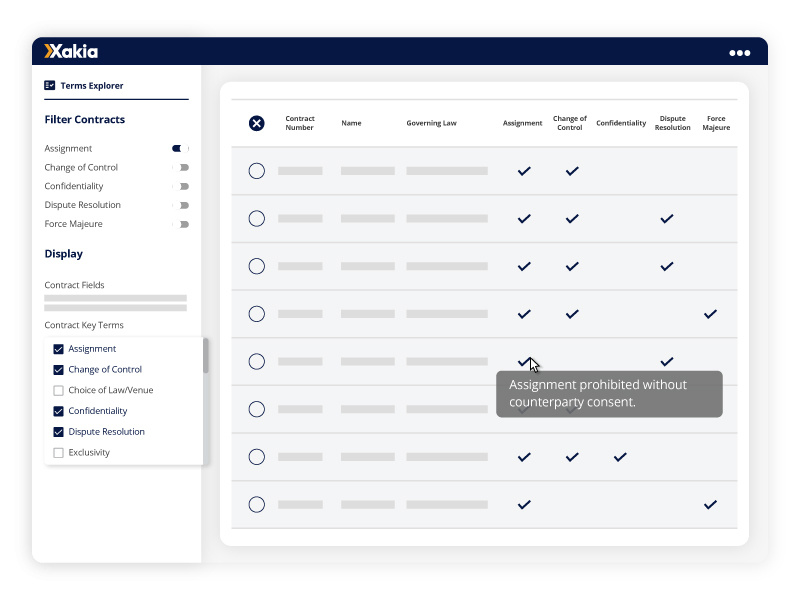One of the legal team's primary responsibilities is to manage the risk of commercial dealings. The active word here is ‘manage’ not ‘avoid’. By its very nature, a business takes risks (legal, regulatory, financial, operational, reputational) in order to expose itself to potential return.
It is the role of the legal team to consider that risk, the context within which it is being taken, and to ensure that it is legally compliant, and that the business is not being exposed to more risk than is necessary for the potential return.
To a very large extent, that role is embodied in contracts. Whether large and complex, or small and part of the business-as-usual function, contracts are collectively a reflection of the organization’s position on the risk / return equation.
Beyond the content of the contract itself, if your contract management process is haphazard, if you do not have a central repository to which all contracts are saved – what are the risks? Once the contract has been signed, what role does an in-house legal department play in avoiding contractual risk?
1. Contractual obligations
Question: Are we complying with our contractual obligations?
A contract exists so that there is a meeting of the minds – an agreed position on who will do what, and when. It must be clear who owns the contract, who will track compliance and record any variations or issues with compliance throughout the life of the contract. If this is stored – and tracked – in each individual contract owner’s inbox or on their laptop, you have a problem.
The risks:
- Satisfactory compliance:
- Did your organization do what they agreed to do?
- Did your counterparty do what they agreed to do?
- If ‘no’ to either of those questions, is something being done to address this?
- Accountability: Is the anticipated return being achieved? Maximized? Who is responsible for this?
The solution:
Track your obligations in a central contract repository and set reminders for the appropriate person/s within your organization throughout the lifecycle of the contract.

2. Inefficiency / responsiveness
Your business needs a rapid response to a contractual situation.
Consider these examples:
- COVID19 has just taken over the world. Your CEO wants to know which of the organization’s top 100 critical contracts include a relevant force majeure clause; or
- Your organization has just received a takeover offer. Your CFO wants to know which of your major customer contracts are impacted by a ‘change of control’ clause.
Can you:
- Identify the top 100 contracts? How is this measured?
- Identify your customer contracts quickly, as distinct from supply, consulting or other contracts?
- Find clauses within those contracts quickly?
The risks:
- You cannot respond quickly: Answering these questions requires finding the contracts. When these contracts are stored in a wide variety of places in the Legal Department alone, and then throughout the business and business systems, it will take weeks if not months to find the relevant information.
- You cannot respond accurately: Once located, the contracts must be read, profiled to understand which are the critical contracts, summarized and analyzed.
You lose the ability to address economic risk through leveraging appropriate contractual positions. You may lose key customers who required a strategic discussion about your acquisition plan.
The solution:
Track your contracts in a central contract repository with powerful search and filter capabilities for rapid retrieval of relevant information.

3. Inconsistency
You must have a single, clear position on key contractual issues.
If your Legal Department is unclear on the standard position in relation to key issues (e.g. indemnity clauses) then you will likely run afoul of each other in both drafting and in responding to your internal clients questions.
The risks:
- Opinion shopping – your internal clients will ask you for an answer, only to ask the same question of your colleague so that they get ‘sign off from Legal’ to win a client account.
- Inconsistent positions will cause confusion and damage both the Legal Department's standing on key issues, and expose the organization to unnecessary risks outside the preferred position.
The solution:
Track your contracts in a central contract repository which quickly and easily surfaces key clauses across contract types and contexts.
4. Lost documents / corporate knowledge
Reinventing the wheel is the #1 time-wasting activity a lawyer can do.
Very little of what you do is being done for the first time. Compounding this, if your organization is more than 10 years old, it is highly unlikely that it is the first time for your organization.
The risks:
- Wasting time and effort - if you draft a contract, shepherd it through the approval and signing process and then send it off into your organization’s ether never to be found again, you lose the ability to tap into existing corporate effort and knowledge and must reinvent the wheel - over and over again.
- Iterating to a better outcome - information lost is a missed opportunity to build on existing knowledge and information.
The solution:
Track your contracts in a central contract repository which captures the key contract document and all supporting documents and their versions, key terms, updates, lifecycle events and more, to quickly and easily understand and build on existing corporate knowledge.

Simple, powerful and affordable contract management software
Step one for contract lifecycle management is a clear, simple contract repository that addresses your primary risks. You do not need to start with every feature available, or make it a large expensive exercise, but you do need to ensure that your contracts are stored centrally, allow you to track and search key terms and retrieve important information quickly.
If you want to learn more about Xakia's simple, powerful and affordable contract lifecycle management, join a demo today.
